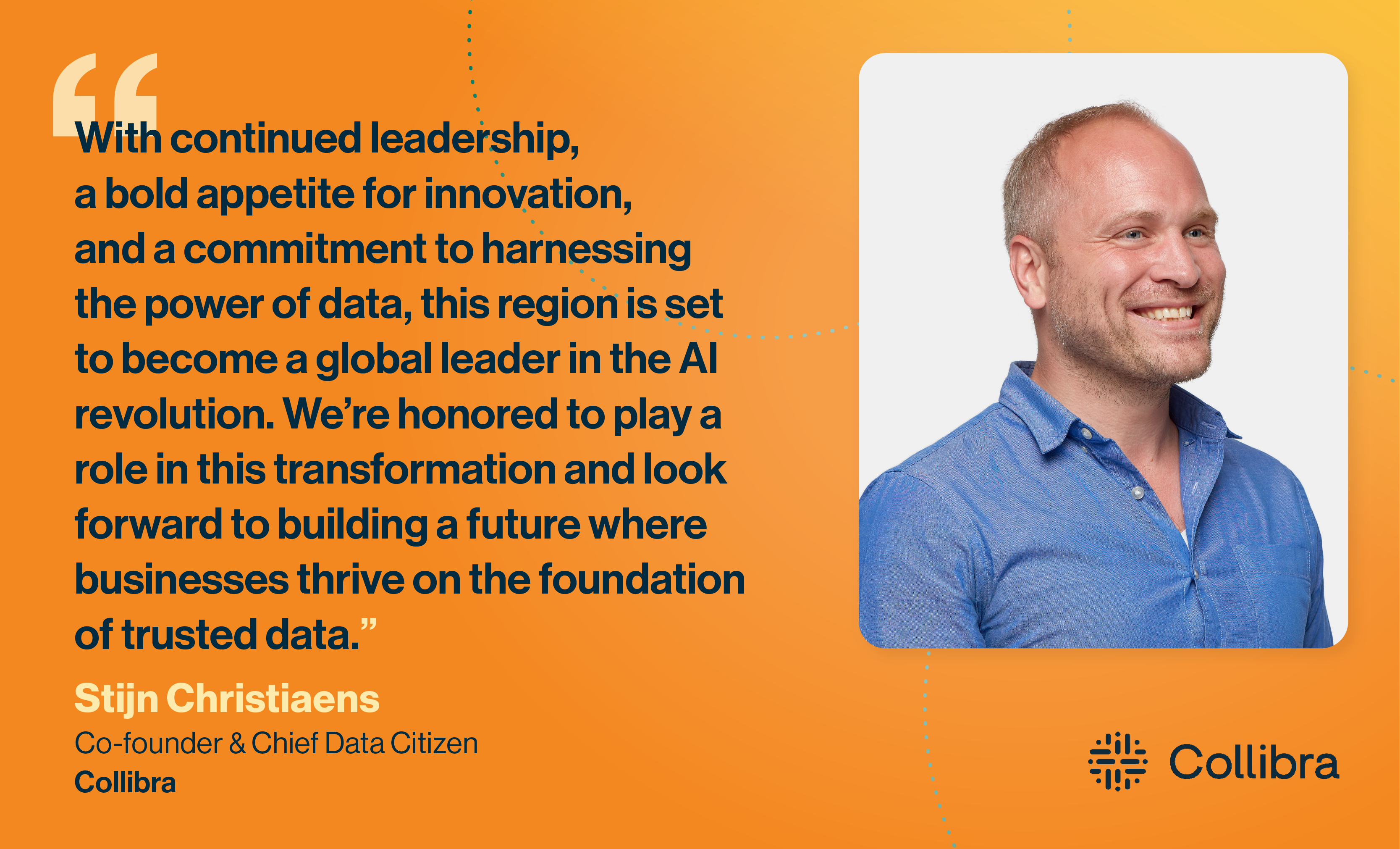Climate change is one of the most urgent and complex challenges of our time. Collibrians believe that the best place to start when staring down a tough challenge is with data. Trusted data can help make a big problem feel more manageable by directing us toward actions and investments that will have the greatest positive impact.
In honor of Climate Month and Earth Day, Joe Lisle, People Analytics Manager and a leader of our Planet Collibra Community, pulled together some of his favored data sources to help you understand the state of climate change today and what actions will matter most in the coming decades. By equipping you with this data, we hope to empower you to spur action in your communities.
The data and resources are organized to help you understand:
- The current state of climate change
- How global leaders are addressing climate change
- How you can take action on climate change
The current state of climate change
Before taking action, it is crucial to learn more about the current state of climate change and trends in the ways that governments, organizations, and companies are addressing climate change. Thankfully, this is where data shines!
What IS climate change?
The US Geological Survey says, “The science is conclusive that the planet has warmed and the climate around the world has changed in response. The current rate of rising global temperatures is not natural nor normal. This plays out in temperature records, more volatile and intense weather patterns (e.g. drought and flooding), and numerous secondary changes like thinning sea ice, and the spread of invasive species into previously uninhabitable areas.”
Put another way by the United Nations, “It is unequivocal that human influence has warmed the atmosphere, ocean, and land. Widespread and rapid changes in the atmosphere, ocean, cryosphere, and biosphere have occurred. Human-induced climate change is already affecting many weather and climate extremes in every region across the globe.”
But what does this mean for us?
- Human habitability: For every degree of temperature increase, it’s estimated that one billion people are pushed out of an area where it is hospitable to live.
- Extreme weather events: Some areas will see decreases in precipitation, others will see increases in precipitation. These changes will be dramatic in some places — meaning more droughts, fires, floods, and other extreme weather.
- Food: Extreme weather events (and generally warmer temperatures) will drastically impact our ability to grow food and feed a growing population.
The chart below illustrates the projected increase in global temperatures due to high levels of greenhouse gasses in the atmosphere.

Three key metrics for understanding the state of climate change
Three of the most important metrics when it comes to climate change are average global temperature change, greenhouse gas (GHG) emissions, and GHG concentrations in the atmosphere. Our World in Data has the best data that science currently has to offer and resources for understanding what the data means, including these three key metrics, as shown in the charts below.
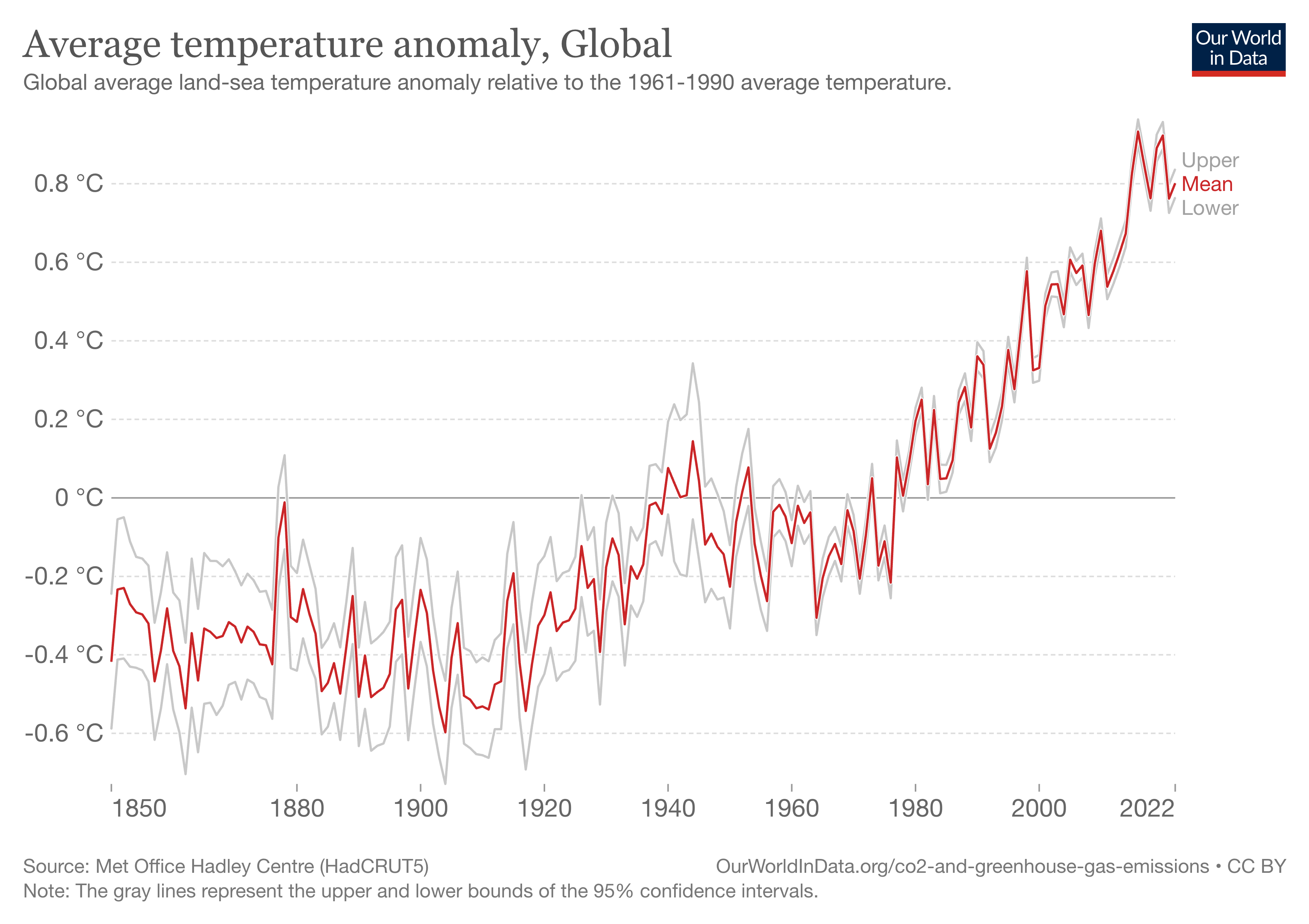
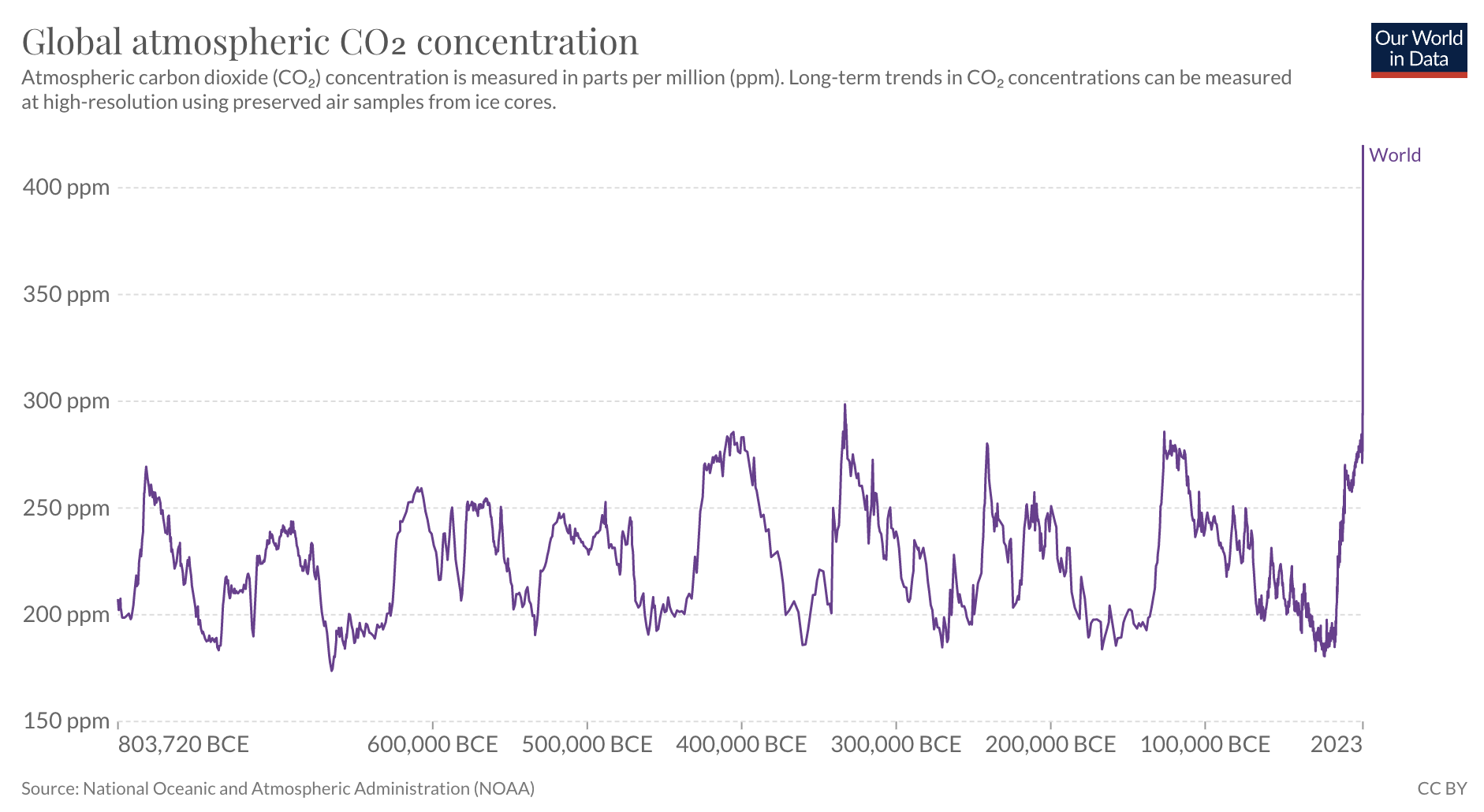
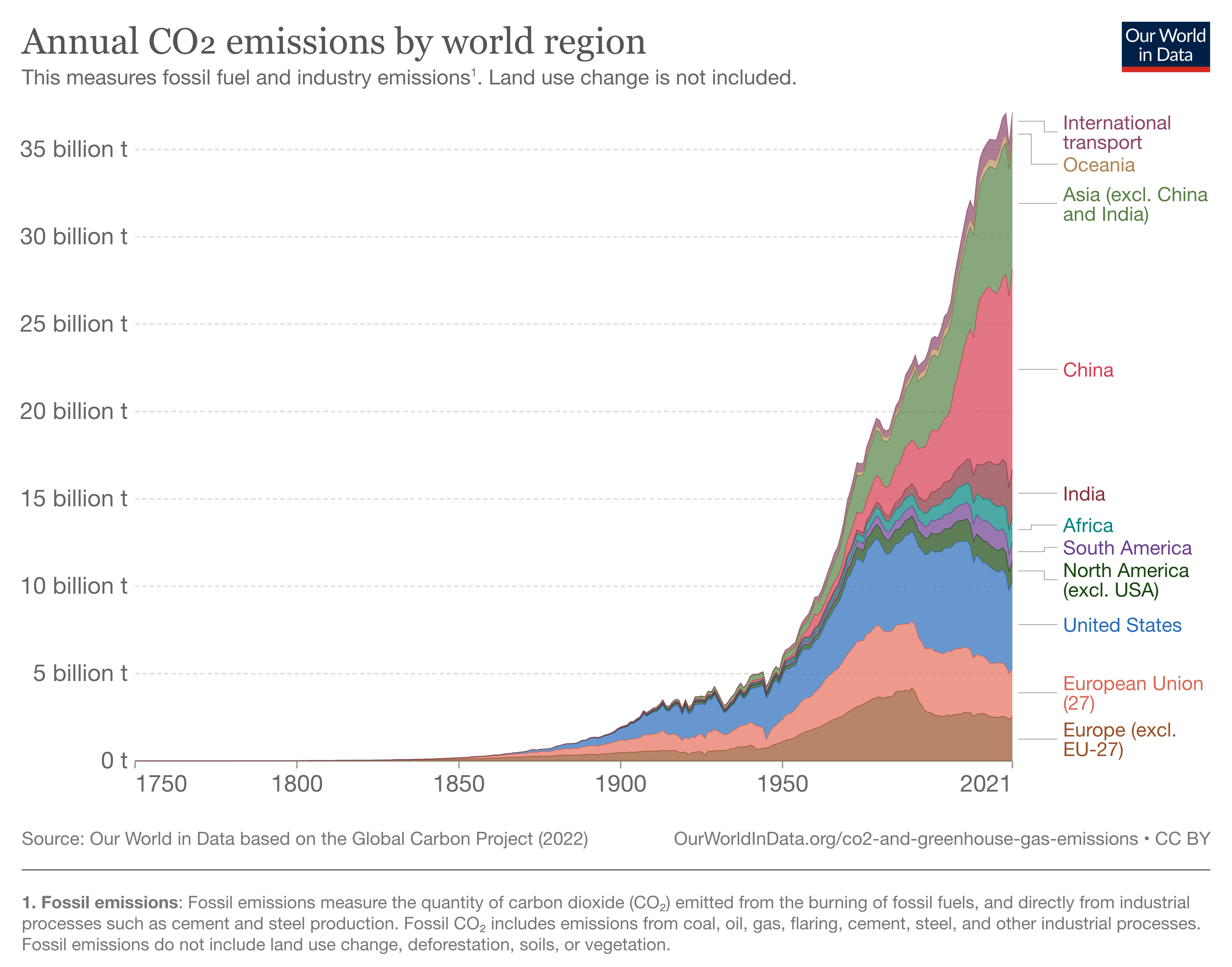
Luckily, not all emissions that go into the atmosphere stay in the atmosphere. Through various natural processes (such as plants photosynthesizing), carbon dioxide and other greenhouse gasses are absorbed from the atmosphere. These are called “sinks”. Right now, according to Project Drawdown, ~59% of emitted greenhouse gasses remain in the atmosphere after 41% of them are sunk through natural processes in land, coastal, and ocean areas.
To address climate change related to global warming, we need to reduce greenhouse gas emission sources and increase sinks until they are about equal. Then, scientists argue that we need to increase sinks even further to absorb excess carbon we’ve emitted since the industrial revolution. The chart below is a good representation of where we are today in terms of reaching the necessary balance.
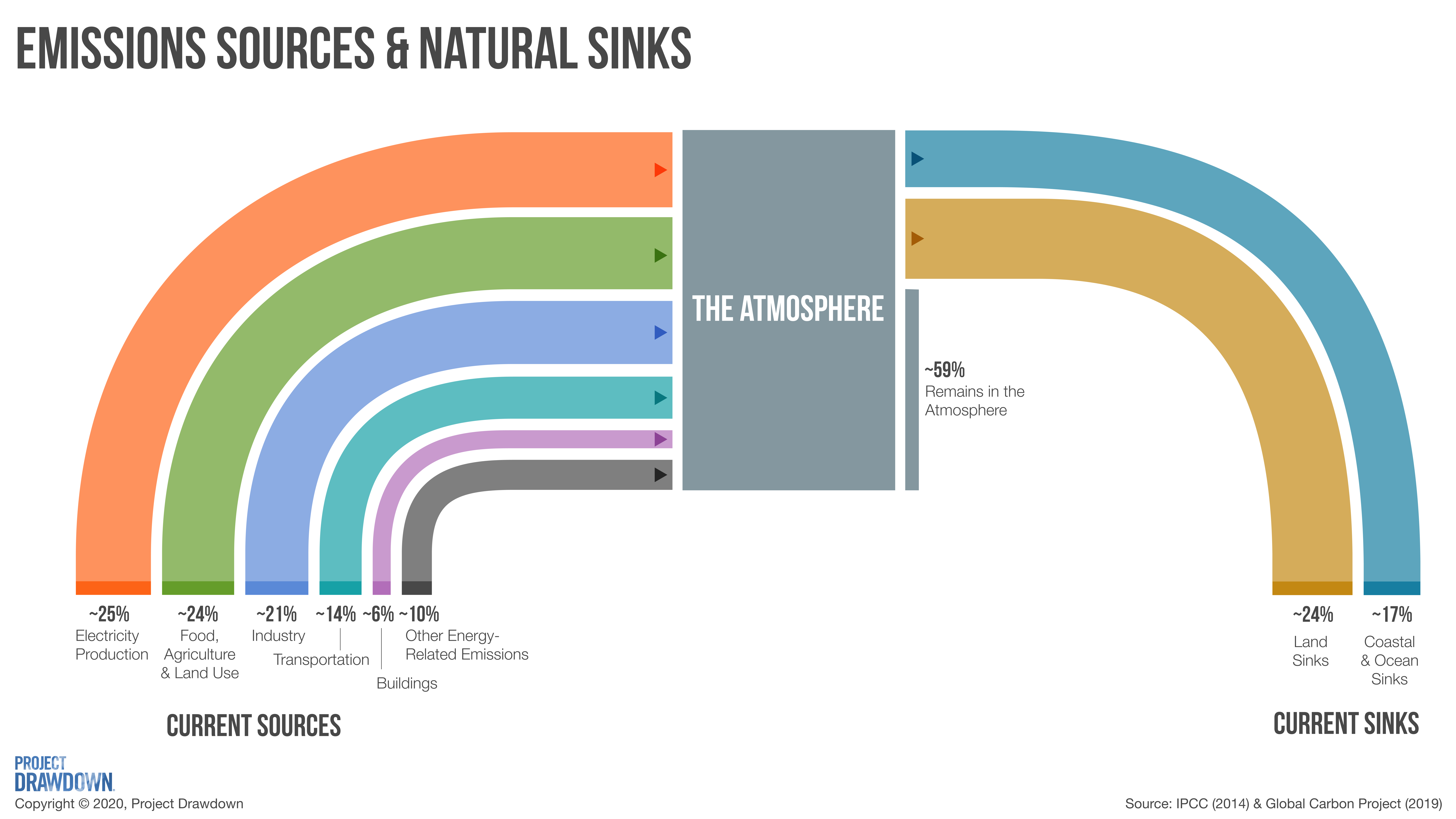
How global leaders are addressing climate change
The theme of Earth Day 2023 is “Invest in Our Planet.” Earth Day organizer, Earthday.org, says, “The theme is focused on engaging governments, institutions, businesses, and the more than 1 billion citizens who participate annually in Earth Day to do their part — everyone accounted for, everyone accountable.” Let’s look at how governments, institutions, and businesses are making an investment, then I’ll share metrics and resources to help you take action as a citizen.
The UN refers to addressing climate change as the “Trillion Dollar Opportunity”. And they don’t appear to be wrong; this opportunity is quickly becoming evident. “Climate Tech,” a new term that refers to any organizations and technology solutions geared toward addressing climate change, has grown at a rapid pace. PwC shared in its State of Climate Tech Report 2022 that climate tech startups raised a record amount of funds in 2021.
If you’re interested in the innovative climate tech solutions appearing to address climate change, I recommend subscribing to Climate Tech VC, which distributes newsletters every week logging all the funds raised within the prior week.
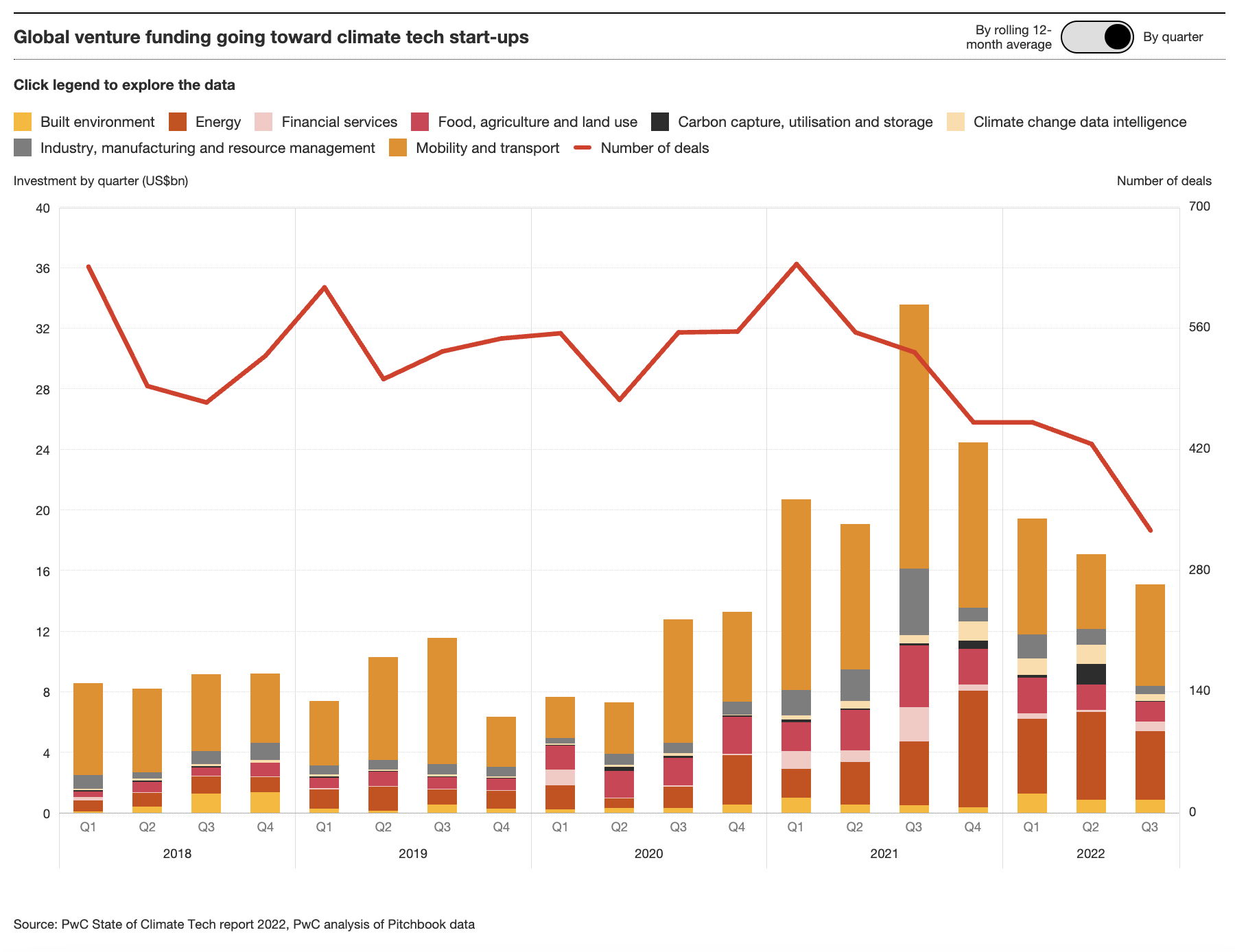
Spurring investment to eliminate the Green Premium
Breakthrough Energy identifies 5 key areas, what they call the Five Grand Challenges, where we need to address greenhouse gas emissions:
- Manufacturing
- Electricity
- Agriculture
- Transportation
- Buildings
By breaking these challenges down into their components, we can begin to understand the “Green Premium,” or the additional cost of choosing a clean technology over one that emits more greenhouse gasses. Then, governments can implement public policies, companies can develop new technologies, investors can invest in new technologies, and individuals can vote with their wallets and influence communities to lower the Green Premium.
The United States, the EU, and other governments across the world have recently developed policies that will drastically reduce the price of green technologies to address the Green Premium. In the United States, the Inflation Reduction Act (IRA) provides almost $400 billion in incentives to switch to clean energy. Importantly, a sizable portion of these incentives is aimed towards consumers, but we’ll get to that a bit later. In the EU, the Green Deal Industrial Plan will unlock faster access to funding for green initiatives, enhance necessary skills or workers to promote growth of green industries, and facilitate and promote trade for green industries.
In other words, governments are clearly taking action, and institutions and businesses have an increasingly great opportunity to lead the way.
How you can take action on climate change
As an individual, it can seem overwhelming to know where to start with a problem this large. While the ultimate solution to climate change will require large-scale systemic change, you can do your part in influencing these systems by investing your time, energy, and dollars into supporting sustainability and reducing your reliance on unsustainable resources.
In your community and government
One of the most impactful actions you can take is supporting climate-friendly policies in your community and governments. In the United States, for instance, calling your state and federal representatives once per week takes 10 minutes. Better yet, form a group to hold each other accountable to make those calls!
Some additional opportunities to make an impact in your community include the Climate Action Now app, which plants trees if you make your voice heard for the climate, and Patagonia’s Action Works, which connects you with volunteering opportunities related to addressing climate change.
At work
Although some organizations have already made net-zero commitments, implementing change within your organization is one of the next largest ways you can help address climate change.
Data leaders have a great opportunity to drive sustainability on an organizational level. Most organizations already have data to measure environmental impact — it’s just not being used for this purpose. For example, the finance team has data on corporate travel, and the workplace team has data on energy use. The key is setting up infrastructure to support teams using this data to improve sustainability within the organization.
Ankur Gupta, Collibra’s Director of Product Marketing, outlined common data sources and challenges to expect in this blog. You can find steps to get started working with this data in our whitepaper about the importance of trusted data in ESG (environmental, social, governance) initiatives.
Even if your role doesn’t relate directly to data, there are plenty of ways to drive sustainability. ClimateAction.tech provides a community and resources on the best way for tech workers to have an impact in their organizations.
At home
Finally, there are a number of ways to have an impact at an individual level. Though these aren’t the most impactful on their own, they can still make a difference when done collectively. One of the biggest impacts you can have includes transitioning your home’s fossil fuel-dependent systems to electric systems. This also includes your vehicle, if you have one.
If you’re in the United States, Rewiring America has created an exhaustive guide of what this looks like. If you’re a homeowner, they’ve even created a guide on how to take advantage of incentives offered by the Inflation Reduction Act. We encourage you to look up incentives in your area, regardless of where you live in the world.
Monitoring the carbon footprint of the food you eat is another easy way to reduce your carbon footprint. Going completely vegetarian or vegan can be a challenge for some people (including me!), but switching to more climate-friendly alternatives like poultry instead of red meat or making a few meals per week vegetarian can drastically reduce your carbon footprint.
Finally, share what actions you are taking with those around you. Talking to colleagues, friends, and family about what climate change means to you and how you’re taking action can have a surprisingly large impact.
Invest in our planet this Earth Day
Now that you’ve seen the data, let it motivate you to invest in our planet. What better way to celebrate Earth Day? Here are all the data sources, resources, and tools linked throughout this article.
The current state of climate change
- Climate 101, US Geological Survey
- Climate Glossary, US Geological Survey
- Climate change data and resources, United Nations
- Climate Migration: An Impending Global Challenge, Columbia University Climate School
- Extreme weather due to climate change, Climate.gov
- CO2 and greenhouse gas emissions data, Our World in Data
- Foundations of greenhouse gas drawdown, Project Drawdown
How global leaders are addressing climate change
- Earth Day 2023 theme and action toolkit, Earthday.org
- The Trillion Dollar Opportunity to Address Climate Change, United Nations
- State of Climate Tech 2022 report, PwC
- Climate Tech VC
- Five Grand Challenges, Breakthrough Energy
- The Green Premium, Breakthrough Energy
- The Inflation Reduction Act: Here’s what’s in it, McKinsey
- The Green Deal Industrial Plan, EU
How you can take action on climate change
- Climate Action Now App
- Patagonia Action Works
- Common ESG data sources, Collibra
- Data for Good ESG whitepaper, Collibra
- Climateaction.tech
- Guide for electrifying your home, Rewiring America
- Guide for using Inflation Reduction Act incentives, Rewiring America
- Environmental impacts of food production, Our World in Data




